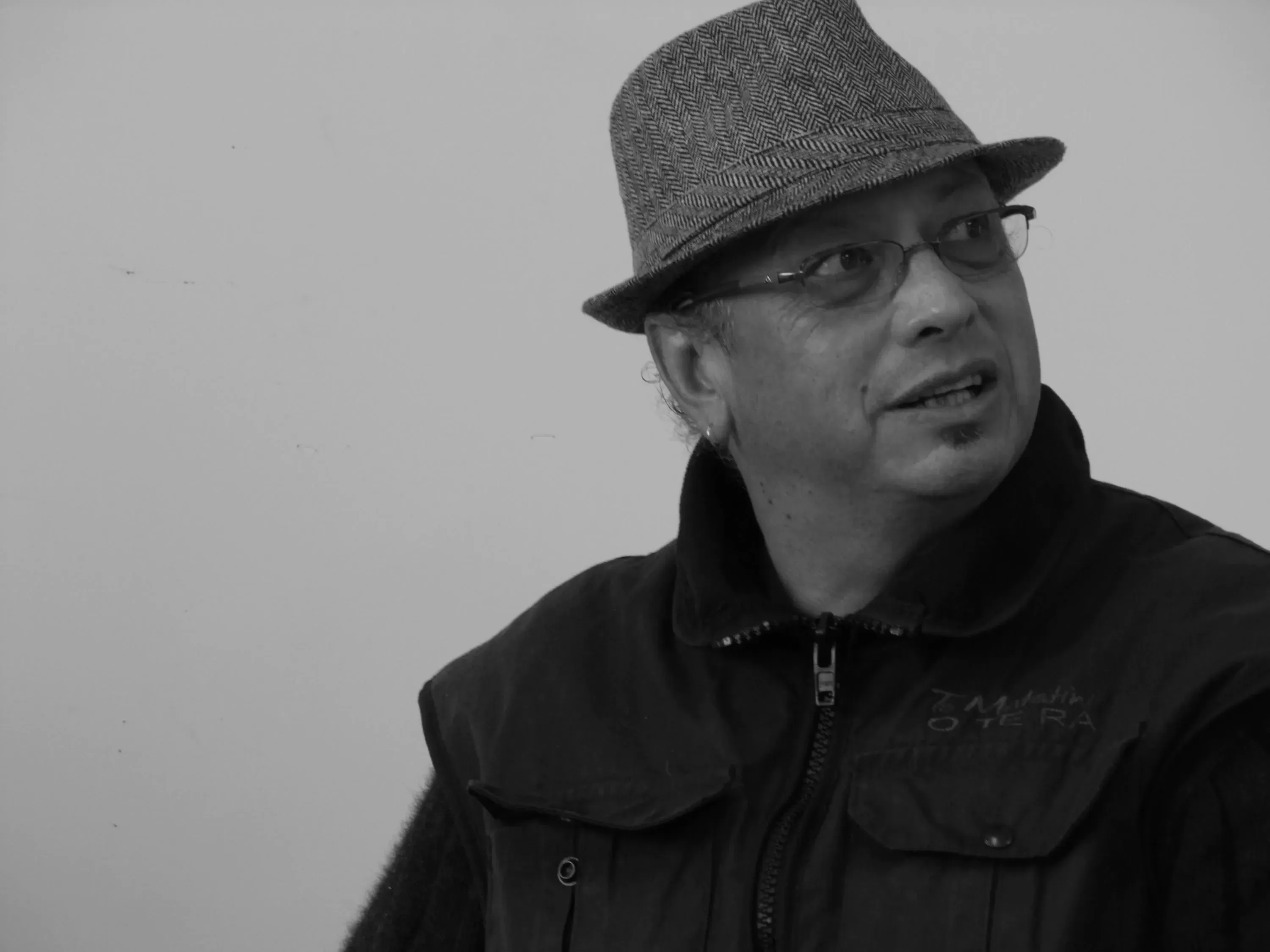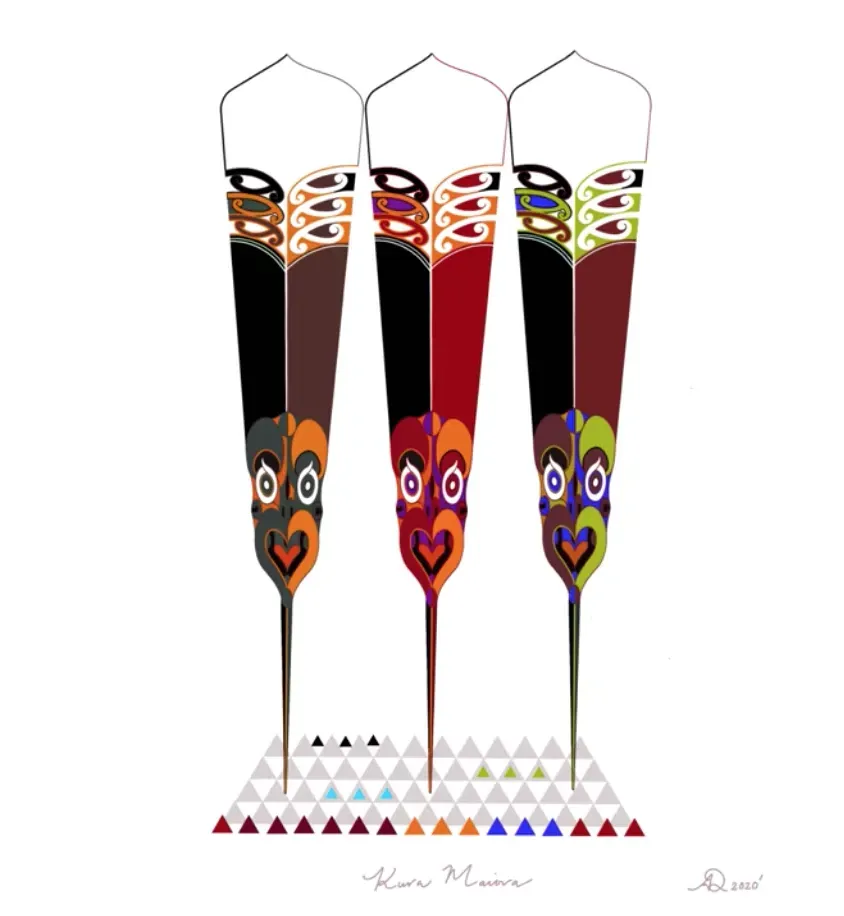Dawn of Change
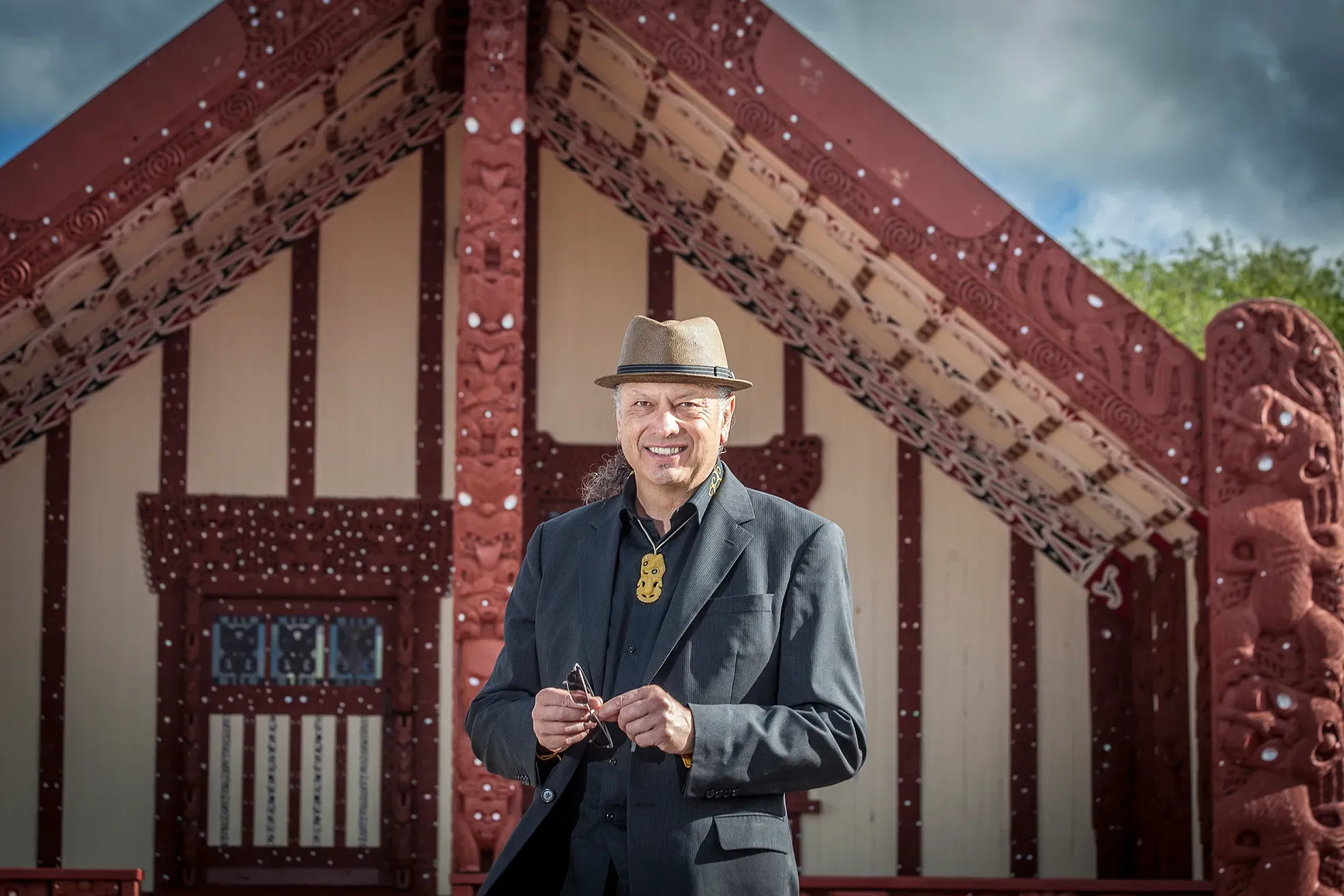
Derek Lardelli is an artist of many disciplines; a ta moko artist, composer, carver, kapa haka performer, visual artist, and graphic designer, to name but a few of the artforms in which he excels. While many have struggled to find their creative resilience in the wake of COVID-19, Lardelli has embraced this new world of social distancing and self-isolation in a uniquely Māori way.
"Creative people […] we live in bubbles anyway,’ he says. ‘The bubble is not a new thing to us; te ao o te tangata mahi toi."
Lardelli spent the Level 4 lockdown period at home in Te Tai Rāwhiti with his wife Rose and their 24-year-old son, Te Ahi. While continuing to work from home as an arts educator and mentor for Toihoukura, the school of Māori Visual Arts in Gisborne, Lardelli has also found the time to craft a new song, a kawa ora.
A Fresh Perspective
‘Te Kawa o Maiora’, is a karakia of sorts, which was written with the intention to bless the new post COVID-19 world in which we find ourselves living.
"A kawa ora in its earliest instance imbues life into a new house, or into a new situation, and this is a very new situation to us," he says.
It was in thinking about how he could help not only his own community but also the wider global community, that Lardelli was inspired to compose ‘Te Kawa o Maiora.’
"Great ideas come out of situations where people are thinking about others, not only themselves and their close relatives but the broader picture about what could help everybody," he says.
"Māori play a vital link as tangata whenua and who we are as mana whenua, but we also have an obligation to make sure that all human beings are okay in this situation because it’s a world pandemic."
"He aha te mea nui o te ao? He tangata, he tangata, he tangata."
Whānau Joy
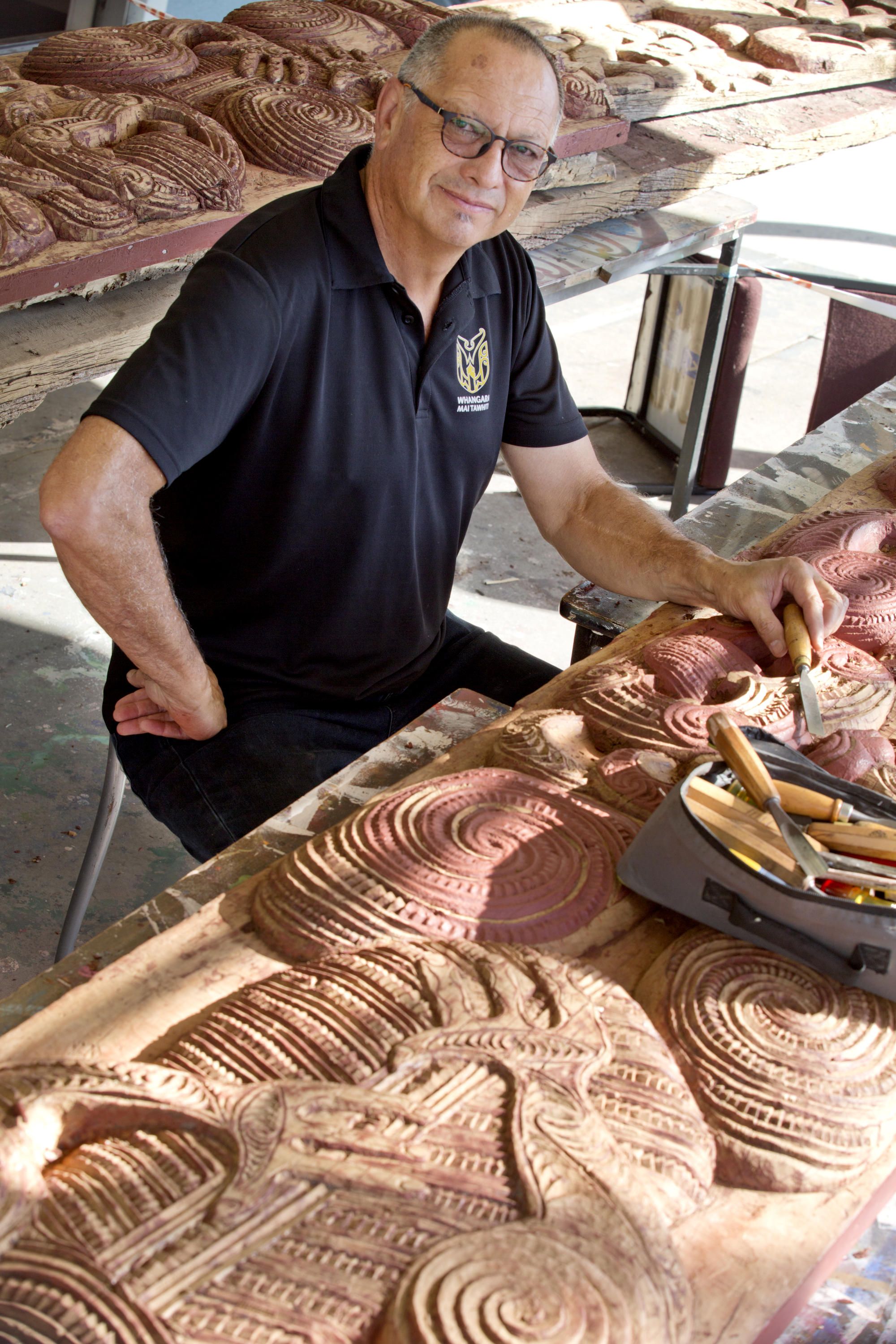
Derek Lardelli working on a whakairo. Photo courtesy of Creative New Zealand, photographer: Norm Heke.
As well as using his expertise as a composer to write ‘Te Kawa o Maiora’ during his time in isolation, Lardelli also practised his skill as a ta moko artist to create a visual illustration of ‘Te Kawa o Maiora’ upon Te Ahi. It was particularly meaningful to Lardelli to see his son wearing his ta moko whilst speaking the kawa ora.
"My son, who was home for five weeks, I did a moko on him from his shoulder to his hand, and we called it Te Kawa o Maiora.
Derek Lardelli's ‘Te Kawa o Maiora.' Image: Creative NZ Facebook.
"It was wonderful to see the moko moving with the words, and the whakaahua coming out of his mouth. It meant so much more to me, and to us (Derek and Rose) because it was alive and well."
Though he has found ways to make the best of the COVID-19 situation by practising his art and finding ways to stay connected to his community, particularly through the use of the internet and Zoom hui, the lockdown period hasn’t come without its challenges for Lardelli and his whānau.
Whānau Heartbreak
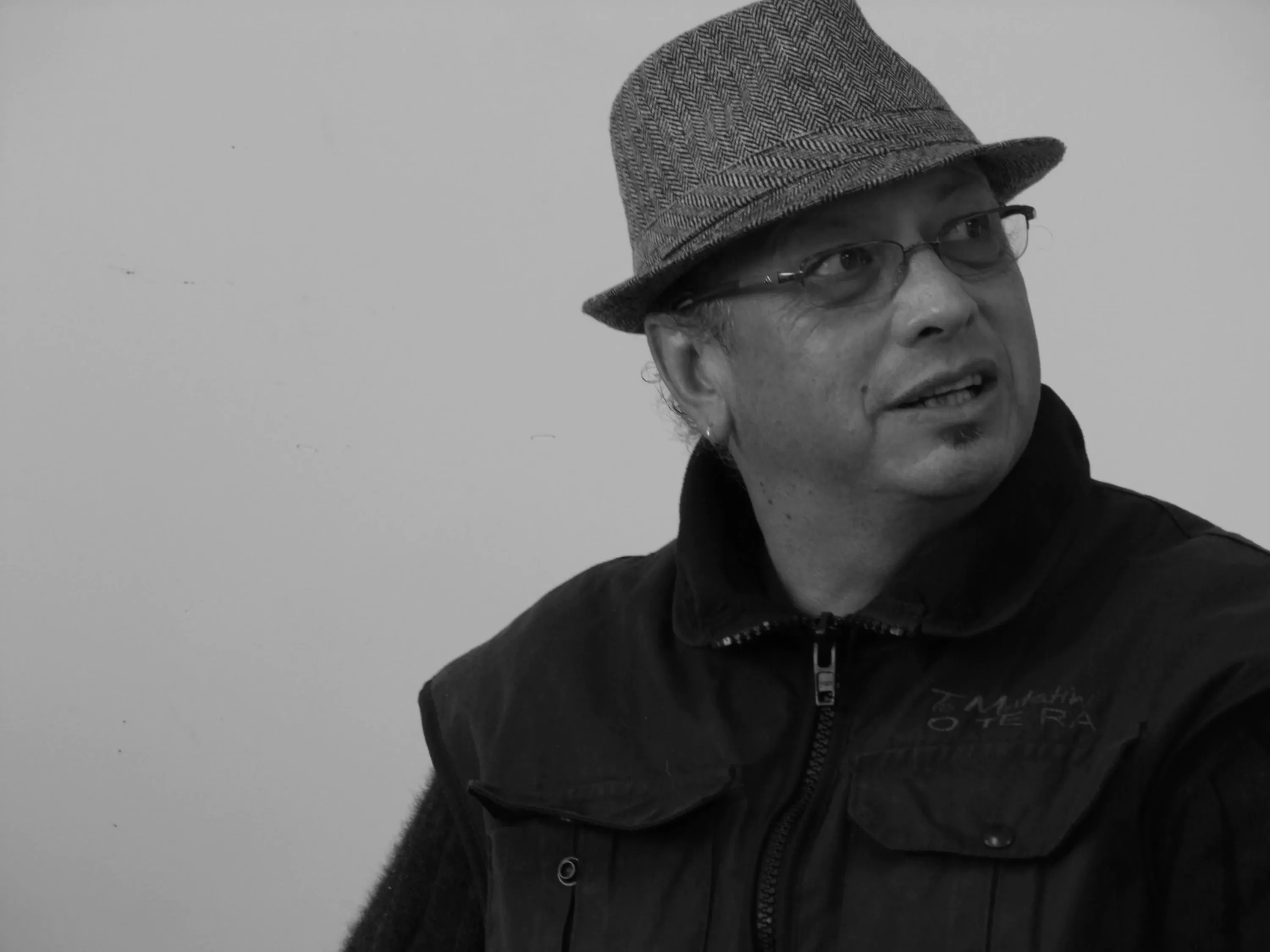
Derek Lardelli. Photo courtesy of Creative New Zealand.
Having lost one of his first cousins at the beginning of Level 4, and another just this week, they’ve had to face the reality of the strict rules which have been placed around holding tangihanga for a loved one during this time.
"I lost my cousin (on Monday) and he was the humblest man I ever knew; he helped everybody. People that you wouldn’t think of, that man helped. Totally, unconditionally, he gave of himself to the betterment of others, that’s the type of human being you need to promote. And yet, there were only ten people."
However, Lardelli understands the needs for these restrictions, which he believes Māori have found a way to work within.
"The word tapu is a form of restriction, and well, we’re under a heavy tapu, restriction. And yet we’ve still found ways to try and connect, even if it is using the internet, we have found a way."
But his acceptance of this new way of being has not come without some sorrow.
"I went to tuku my cousin, and I couldn’t work it out, what it was - and then it dawned on me - it was the power of silence; it was reverberating in my ears. It overcame me for a wee while there because you’re used to hearing tangi. You’re used to hearing the words, and the human nature of lifting the tupapaku and carrying the wairua and all of that, and this instance, it was something very hard to explain. It was eerie.
"However, it’s okay. We’re still alive."
New Dawn
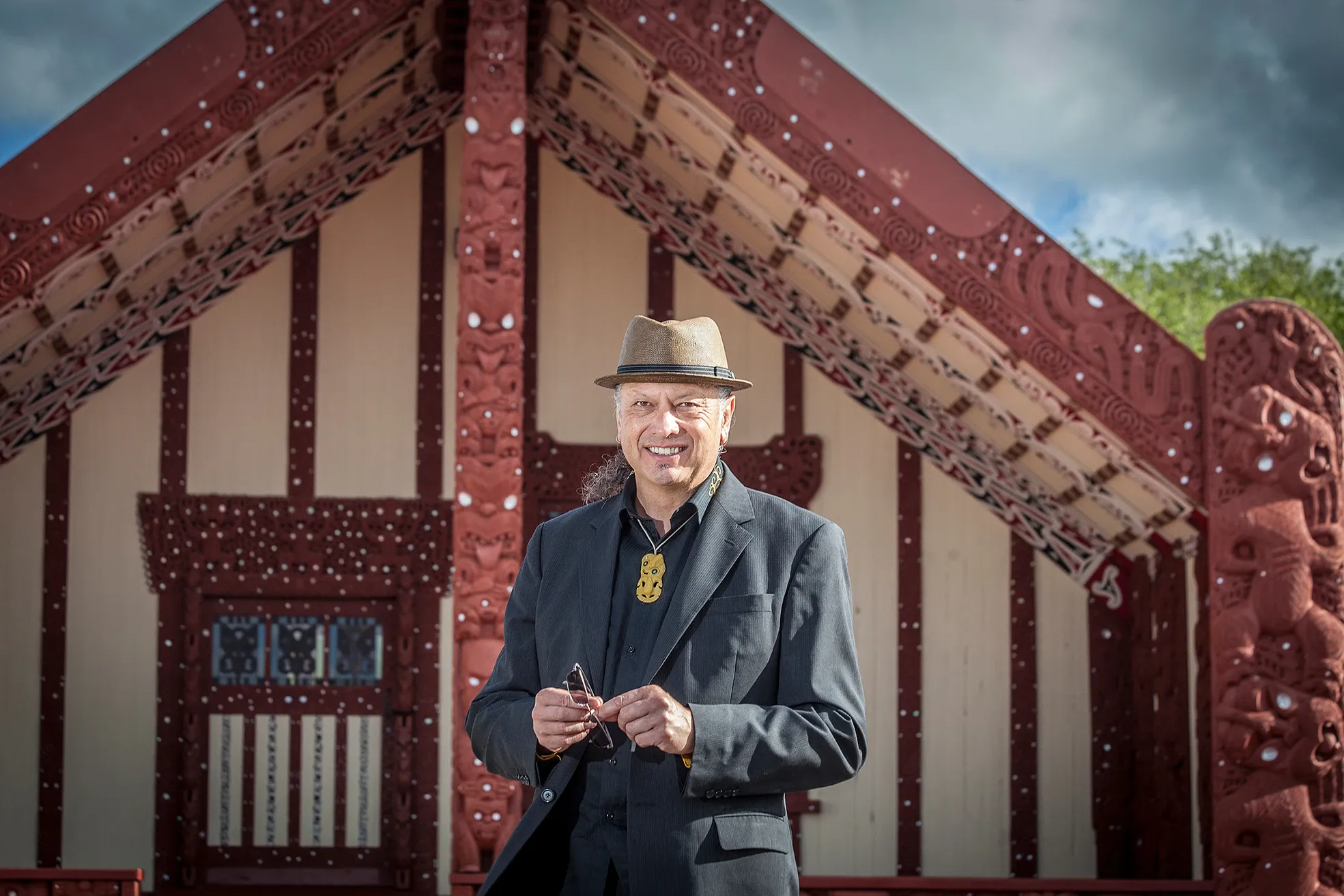
Derek Lardelli. Photo courtesy of Creative New Zealand, photographer: Andrew Warner.
Lardelli believes we are witnessing a new dawn, and that we, as creatives, must look to a new horizon. We must welcome the new dawn in the way our ancestors did.
"Our old people were not frightened of change. They actually thrived on the cusp of change. They moved here to Aotearoa to discover a new land and live in a new place because they challenged the dawn of change, and this is another dawn of change. And the change is kei te whererei mai; it’s being born right now!
"We are part of that change process, and it’s reverberating, and it’s crashing, it’s jarring, it’s ringing, it’s tingling, and it’s creating the sensation within us as creatives."
If you’re looking to use this time to connect or reconnect to te reo Māori, Lardelli says that now is the perfect opportunity to do so, as te reo Māori needs to be activated from a home base.
"You’re at home, you’re in a bubble. You’re in a confined, isolated position, and the best way to start (learning te reo) is from within your own self, and within your own bubble.
"You’re at home, so start! And if you’ve started - congratulations. Keep going!"
You can experience Derek Lardelli's kawa ora ‘Te Kawa o Maiora’, as part of Creative New Zealand’s Thankful For Art series here - a national campaign to highlight the value of the arts during COVID-19 lockdown and beyond. You can find out more about #TFA here.
